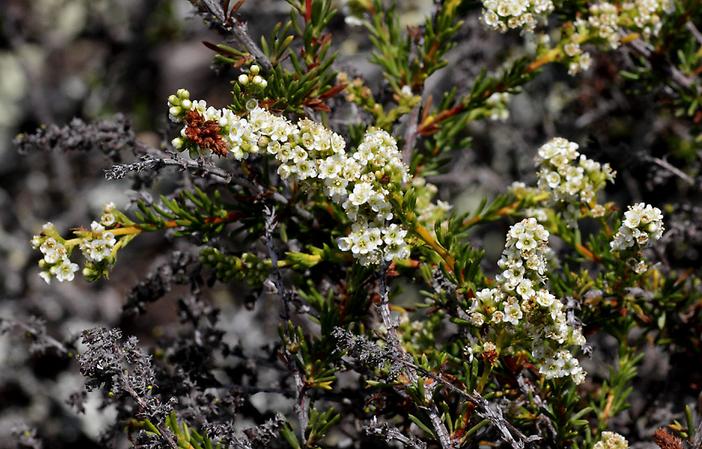Chamise
(Adenostoma fasciculatum)
Chamise (Adenostoma fasciculatum)
/
/

NatureShutterbug
CC BY 2.0
Image By:
NatureShutterbug
Recorded By:
Copyright:
CC BY 2.0
Copyright Notice:
Photo by: NatureShutterbug | License Type: CC BY 2.0 | License URL: https://creativecommons.org/licenses/by/2.0/ | Uploader: NatureShutterbug | Publisher: Flickr







































































































































































































































































































Estimated Native Range
Summary
Adenostoma fasciculatum, commonly known as chamise or greasewood, is an evergreen shrub native to the chaparral and coastal sage scrub of California and Baja California. It thrives on dry, rocky slopes, and is adapted to serpentine soils, which are often toxic to other plant species. Chamise typically grows less than 4 meters in height and features long, arching stems with brown to gray bark. Its growth form is diffusely branched and spreading, with some varieties exhibiting a prostrate habit. The slender, numerous, and erect stems usually lack permanent branches. The leaves are small, evergreen, heavily sclerified, and sometimes sickle-shaped, which helps reduce water loss. Chamise blooms in spring to early summer, producing dense to open inflorescences up to 17 cm long, with small, white, and showy flowers that attract pollinators. The plant’s specialized lignotuber, or burl, at the base of the stem enables it to resprout after wildfires.
Chamise is valued for its extreme drought tolerance and ability to grow in nutrient-poor, barren soils, including slate, sand, clay, and gravel. It is often used in xeriscaping and as a fire-resistant planting. The plant’s resilience and low water requirements make it suitable for challenging sites and restoration projects. In cultivation, it requires full sun exposure and well-drained soils. While generally low-maintenance, chamise can be prone to root rot in poorly drained conditions. It is also an important forage plant for wildlife in post-wildfire environments.CC BY-SA 4.0
Chamise is valued for its extreme drought tolerance and ability to grow in nutrient-poor, barren soils, including slate, sand, clay, and gravel. It is often used in xeriscaping and as a fire-resistant planting. The plant’s resilience and low water requirements make it suitable for challenging sites and restoration projects. In cultivation, it requires full sun exposure and well-drained soils. While generally low-maintenance, chamise can be prone to root rot in poorly drained conditions. It is also an important forage plant for wildlife in post-wildfire environments.CC BY-SA 4.0
Plant Description
- Plant Type: Shrub
- Height: 3-9 feet
- Width: 3-6 feet
- Growth Rate: Slow
- Flower Color: White
- Flowering Season: Spring, Summer
- Leaf Retention: Evergreen
Growth Requirements
- Sun: Full Sun
- Water: Low
- Drainage: Fast, Medium
Common Uses
Bank Stabilization, Bee Garden, Butterfly Garden, Drought Tolerant, Erosion Control, Groundcover, Low Maintenance, Potted Plant, Salt Tolerant, Showy Flowers
Natural Habitat
Chaparral and coastal sage scrub, particularly on dry, rocky slopes and serpentine soils
Other Names
Common Names: Greasewood
Scientific Names: Adenostoma fasciculatum , Adenostoma fasciculatum var. fasciculatum , Adenostoma fasciculatum var. prostratum , Adenostoma brevifolium , Adenostoma fasciculatum var. densifolium , Adenostoma fasciculatum var. hirsutum , Adenostoma fasciculatum var. typica
GBIF Accepted Name: Adenostoma fasciculatum Hook. & Arn.